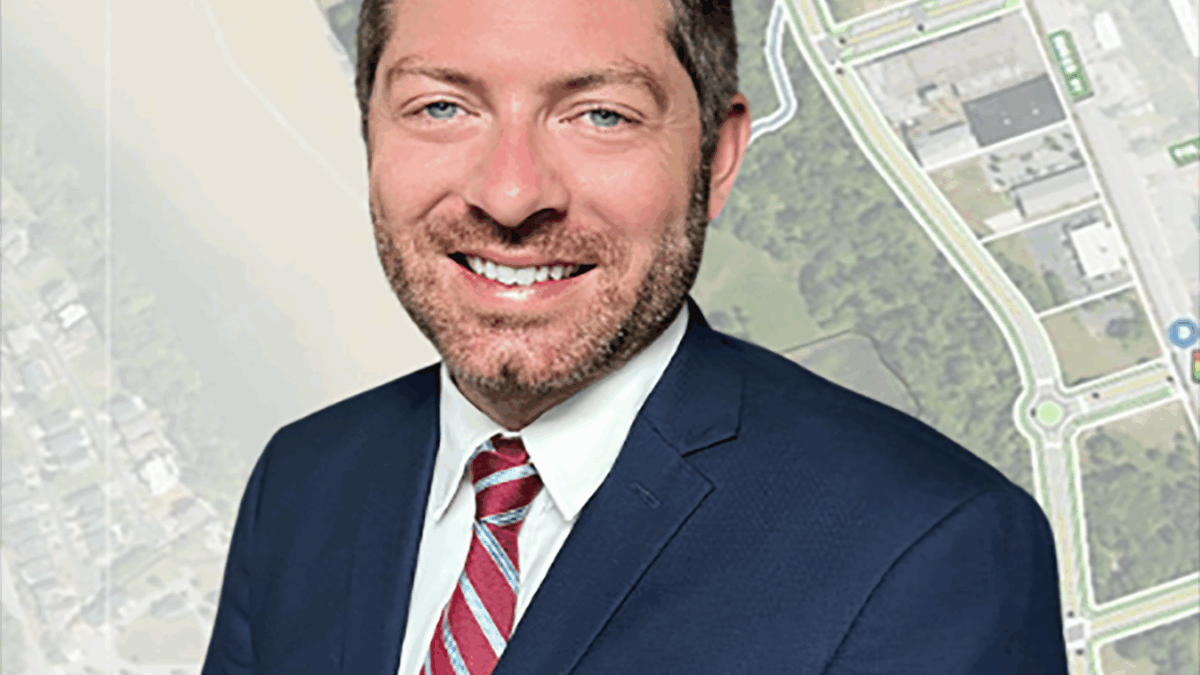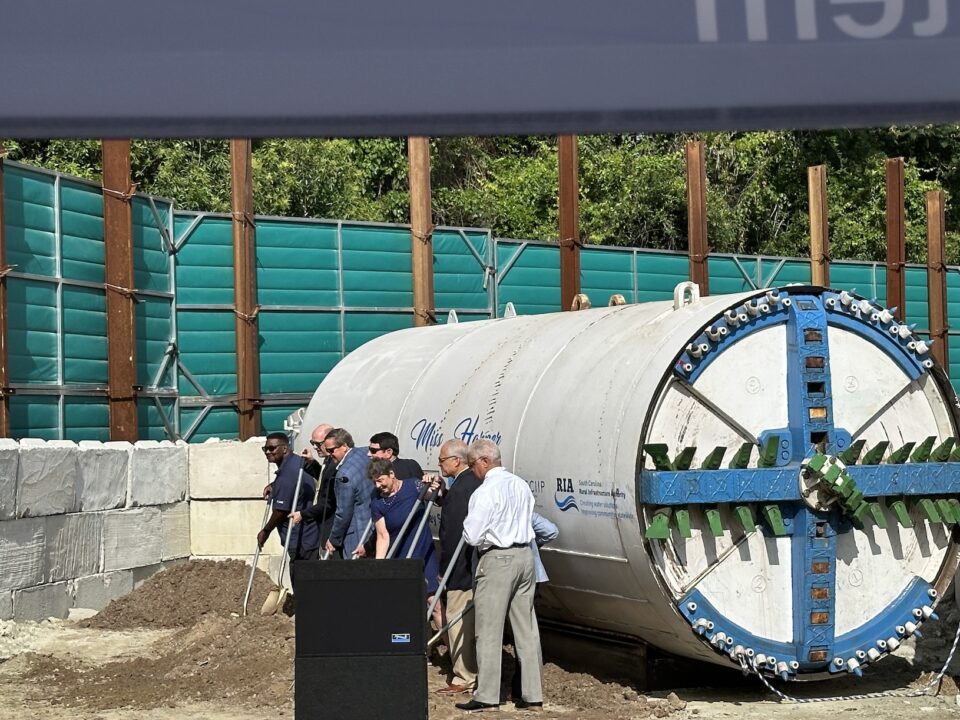Expert Perspective: A Conversation with Travis Basnett, PE
In the evolving landscape of South Carolina’s Midlands, few leaders have been more engaged or invested than Travis Basnett. As Principal and Managing Director of Hussey Gay Bell’s Columbia and Charleston offices, Travis has been instrumental in shaping the region’s industrial growth — championing smart infrastructure, deep local collaboration, and a future-forward approach to development. In this edition of Ask the Experts, we sat down
with Travis to explore the trends shaping the Midlands, how our firm is positioning itself to lead, and why community-rooted work is more important now than ever.
1. Q: You’ve been at the forefront of several major industrial projects. What trends are you seeing across the Midlands?
A: The Midlands is hot right now — especially for manufacturing. We’re seeing a shift from large, speculative warehouses to more build-to-suit developments. With such a low vacancy rate in places like Lexington and Orangeburg, customized industrial spaces between 50,000 and 200,000 square feet are becoming the norm. We’re also seeing an evolution toward smarter manufacturing, including the integration of artificial intelligence into operations.
2. Q: What infrastructure challenges and opportunities are surfacing alongside this growth?
A: Infrastructure is a critical factor in the Midlands’ industrial growth, and power is at the forefront of those discussions. The long lead times for critical components, like specialty transformers and switchgears, often require us to plan 36 months in advance to ensure projects stay on track. Beyond power, water and sewer access poses significant challenges, particularly in rural areas outside of core urban areas. For instance, we’ve encountered sites requiring 10-mile pipe extensions to connect to existing systems, which can make or break a project’s feasibility. This is where Hussey Gay Bell’s early involvement becomes invaluable. We work closely
with cities, counties and utility providers to assess site constraints upfront, identifying potential dealbreakers like inadequate infrastructure or environmental limitations. By conducting thorough site evaluations and collaborating on creative solutions – such as phased utility expansions or partnerships with local utilities – we help transform marginal sites into viable industrial hubs. These efforts not only support economic growth but also ensure sustainable, long-term development that benefits the entire region.
3. Q: What’s the relationship between economic growth and sustainability in today’s industrial development?
A: It’s a balancing act, but a lot of it now happens naturally through stricter permitting regulations. That said, it’s also a design philosophy — we’re seeing more reduced-impact, passive design strategies that prioritize things like orientation for natural cooling, maintaining tree cover, and improving the day-to-day quality of life for employees. It’s about
turning regulations into assets.
4. Q: You’ve worked on major industrial projects like E. & J. Gallo and Jushi USA. What lessons have stuck with you?
A: Teamwork. In South Carolina, we often handle just the civil/site components, which means we must coordinate with a range of trades. Flexibility is critical. There are constant changes, and aligning around the shared goal of a functioning, client-driven facility is the only way forward. At the end of the day, these projects support jobs, and that’s meaningful. It’s about helping people take care of their families.
5. Q: With your extensive experience in economic development, what emerging opportunities should our team be keeping an eye on in the coming years, particularly in sectors outside traditional manufacturing?
A: Economic development doesn’t stop at job creation; it sparks a ripple effect. New industries bring people, and those people need places to live, eat, and go to school. That means opportunities in housing, hospitality, education, and supporting infrastructure are just as critical as the industrial projects themselves. It’s important we focus on these adjacent sectors and think holistically. While organizations like SCEDA do a great job addressing regional needs, there’s a real opportunity for HGB to go deeper—to build relationships at the county and community level and understand then unique needs of smaller, often overlooked areas. That’s where we can create a real, lasting impact.
6. Q: Given the regional focus of your work, how can Hussey Gay Bell play a larger role in shaping the industrial landscape in Columbia and surrounding areas? Are there specific initiatives we should be pursuing to increase our visibility and influence?
A: I think the most impactful thing we can do as a company is to deepen our understanding of the local landscape. That means expanding our efforts and becoming more actively engaged in regional initiatives. Visibility is key, you must be present to be considered. It starts with showing up. Consistent follow-up, making introductions and getting more of our team visible in the room – that’s how we expand influence. There’s a real opportunity in empowering our people to represent us, introducing one another, making connections, and collectively building relationships. The more integrated we are, the greater our influence will be.
7. Q: What role does collaboration play in your projects, especially when working with city planners, developers, and other key stakeholders in industrial and infrastructure development? How can our internal teams work more effectively to support these efforts?
A: The William Street Extension project is a great example. We have weekly meetings with everyone from the executive team to city engineers and the assistant city manager. I often serve as the connecting point across all of them, which is effective but can create a bottleneck. Being proactive instead of reactive is key. We should be reaching out early asking stakeholders about their vision, looping in utility providers. On this project, a mid-level
contact casually mentioned a force main that no one else had flagged. Because we caught it early, it’s now part of our plan. Understanding the full project life cycle and who’s impacted, from stakeholders to the
community, is critical. Community meetings, public feedback, and broad thinking help us deliver better outcomes. Internally, the more we think beyond just the technical scope, the more value we bring.
8. Q: What role do you see for technology and innovation in the future of industrial development? Are there any cutting-edge solutions we could adopt to enhance our projects or make them more efficient for clients?
A: AI is poised to transform much of what we do. Behind the scenes, we’re already having active discussions about how to integrate it into our daily workflows. It’s arguably the most significant technological advancement of the past few decades, and it has the potential to serve as a powerful assistant that significantly boosts our productivity. We’re already seeing pilot programs that use AI to model stormwater systems with a focus on resilience, and others that detect utility conflicts to ensure constructability. If we’re not on the cutting edge of AI adoption, we risk falling behind. Learning how to effectively use these tools, even through “prompt engineering”, will be crucial to staying competitive and delivering greater value to our clients.
9. Q: The Williams Street Extension project in Columbia is a major undertaking that will not only enhance public access to the river but also stimulate economic development. Can you walk us through the key challenges and opportunities that come with such a high-visibility project? How does Hussey Gay Bell’s involvement stand out in this initiative?
A: The Williams Street Extension is a unique and high-visibility project—one that we’re proud to be involved with from the early design phase. Our work began through a direct relationship with the property owner, Charlie Thompson, who had long seen the potential in this underutilized land. As someone who used to drive across the Gervais Bridge and wondered why the area hadn’t been developed, he recognized the opportunity to connect
the park to the canal and open up greater access to the Congaree River. From our perspective, this project demands a holistic approach. We’re not just laying out infrastructure, we’re helping shape how the community interacts with the river for generations to come. That means being proactive with stakeholders, addressing environmental concerns (like preserving deer habitats), and ensuring that development is thoughtful and sustainable. Because we’re local, we bring a unique understanding of both the technical and community considerations. That insight allows us to navigate challenges more effectively and deliver
results that meet the client’s goals while respecting the area’s character. In projects like this, being rooted in the region really does make a difference.
10. Q: The Williams Street Extension is shaping up to be a landmark project for Columbia. What has been the most rewarding aspect of working on this project, and how does it align with your vision for economic growth and community development in the region?
A: The most rewarding part of working on the Williams Street Extension has been positioning ourselves as a firm that’s not just heard but actively involved in shaping the future of Columbia. This project has been deeply collaborative at every level, especially with the City of Columbia, and it’s far more than a typical assignment – we’re personally invested in its success. For me, there’s something incredibly fulfilling about seeing a project through its entire lifecycle, from a conceptual idea on paper to a built, functional piece of the community. Having lived in Columbia since college, this project holds personal meaning. It’s exciting to contribute to something that will have a lasting impact on a city I care about. From an economic development perspective, this project is a catalyst. It’s in the heart of downtown and paves the way for higher-density development — hotels, restaurants, river access, and more—which can, in turn, spur additional commercial and residential growth. The site is even considered as part of a multicounty industrial park. That kind of urban vibrancy matters to industries looking to locate here. They want to see not just infrastructure, but a community where people will live, work, and enjoy their time. It’s all interconnected, and this project is a big piece of that puzzle.



